We’ve seen some pretty impressive roller coaster models over the years. I myself have built the Comet, a CoasterDynamix kit that is very difficult to get operating correctly. So when I stumbled across Adam Throgmorton’s working wooden coaster model I was taken aback. The model uses a full-size train that glides up and down the curved hills with ease while at the same time not going too quickly – one of the biggest pitfalls of other coaster models. I had to know more about how the coaster worked and what went into the design process. Thanks to Adam for sharing some insight into his wonderful creation. But first, check out the coaster gracefully dancing around the track in the video below.
C101: For those who don’t know, who are you and what do you do?
Adam: I own ModelWorksAJT in Las Vegas NV and have been building models for about 25 years. I got my start building models for Steve Wynn working on the Mirage, Treasure Island, Bellagio and other projects of his. I started my own company in 1995 and built many of the resorts on the Las Vegas strip as well as other types of developments around the world. I have always loved building full detail architectural models since I was a kid and turned my hobby into a career. Recently we were commissioned by Disneyland to create pieces celebrating Disneyland’s 60th anniversary by designing highly detailed models representing Sleeping Beauty Castle, Walt Disney’s private apartment above the fire station on Main Street U.S.A., and Club 33. If you would like to see examples of our work please visit www.modelworksajt.com.
C101: Why did you decide to build the model roller coaster – for a client or just for fun?
Adam: The very first model I had an interest in building when I was a child was a fully operational miniature wooden roller coaster. My father helped me when I was about 8 years old to construct my first ever model of a coaster. It didn’t operate but captured my imagination so I set out building various prototypes trying to figure it out. As years passed I went on to other types of models but the fascination remained for the grand old wooden roller coasters so I picked it back up a few years ago and here we are with my current version. I have had a lot of interest from people wanting to purchase or rent it and I am considering the possibility of renting since I really wouldn’t want to part with it.
C101: How much planning and design went into the coaster or did you just start building?
After so many years of tinkering with different ideas and techniques I finally settled on the current design version that you see. I had a general layout in mind when I started construction but I also decided to let it flow and change as I built each section of the track. The gravitational force of the coaster train really dictated how much play I would get out of the length of the course and I wanted to keep it aesthetically and proportionally pleasing at the same time. I really view the coaster more of a kinetic sculpture rather than a model. Something about the complication of all the wood interacting and supporting one another coming together to create a cohesive design has always interested me. The amount of time it has taken to get to this point is really hard to determine since I have worked intermittently on it over the past 7 years. Needless to say it has been countless hours but most of them enjoyable!
C101: What materials is it made out of, especially the track?
Adam: The bulk of the material is bass wood. It was important to me to keep it as authentic of a wooden roller coaster as possible. I mostly use plastics in my architectural models so it was nice to get into working with wood more. The track is a combination of HO scale train track, styrene plastics and bass wood. The track operates the same way as an actual wooden coaster with up-stop fins underneath the entire length of track. The chain lifts work the same as their full scale counterparts as well.
C101: How did you achieve such a realistic look?
Adam: The realistic look of the roller coaster is really helped out by being on such a huge scale. The problem with smaller model roller coasters is that the trains have to run so fast to make it around the course with gravity. The result is you can’t blink or you will miss most of the run. By having a larger layout and heavier trains I was able to achieve a bit more realistic flow to the gravitational pull on the trains so that they achieve believability. The wooden base that the coaster sits on was a huge consideration for me as well because I really didn’t want to have it simply put onto a rectangular pedestal. The base is custom built to flow around the entire coaster so that it cuts in and out of the wooden structure continuing the design to the ground in a sense.
C101: Is the model 100% finished or do you see yourself adding more details as time goes on?
The coaster is not complete as I still have the main station house to design and finish. It was always my plan to get the coaster to this point and then upload pictures and videos of the station as it progresses. I currently do not have active plans to build another roller coaster.
C101: If one of our readers wanted to start building their own coaster models, what advice would you give them?
As far as advice to others about building their own models I have some thoughts. If you want a truly great model stay away from store bought kits. When I was starting out building roller coaster models there were not any convincing kits or store bought models out there. It really forced me to come up with my own unique way of doing things and that learning process crept over into all other areas of architectural model building. I was able to develop and teach myself a way of doing things that didn’t include instructions and click/glue together pre-made parts. The end results were often times frustrating but ultimately satisfying as I had done it myself and there wasn’t anything else out there like it. Plus it gave me the confidence and skill to go about other types of models that I turned into a career.
C101: Do you ride real roller coasters, and if so which is your favorite?
I grew up going to many theme and amusement parks with my family. My brother Todd and I were huge roller coaster fans and would travel far and wide to ride on as many as we could. The new high tech coasters were as fascinating as the old classics to us. We could not find a comprehensive book on roller coasters at the time so Todd went about writing one. It was so successful it has spawned a series of books that he has had published and has brought in my niece Samantha to co-author as well. As far as my favorite I have many, but I have to say that one that will always stand out for me is The Beast at King’s Island in Ohio. That coaster achieves a level of experience it could almost be considered spiritual, especially at night!
C101: I knew your name sounded familiar! I have a copy of Todd’s book:
Actually, it might have been the first roller coaster book I ever owned and helped fuel my passion for amusement parks and roller coasters. Thanks again Adam for sharing everything with us!
Here’s another video of the working coaster model:
See more of Adam’s projects here and be sure to subscribe to Adam’s YouTube channel.
What do you think – do you agree this is one of the best working wood coaster models you’ve seen?

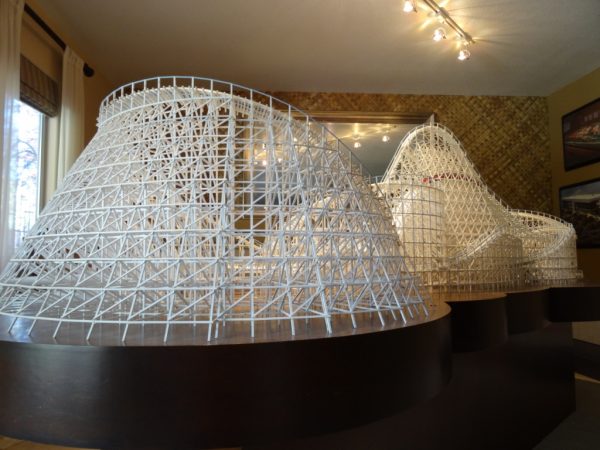

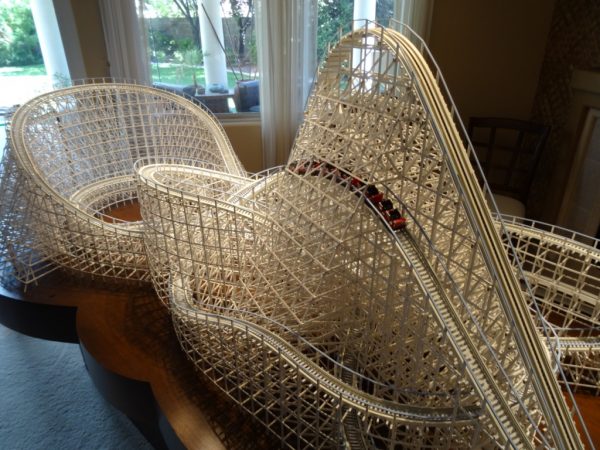
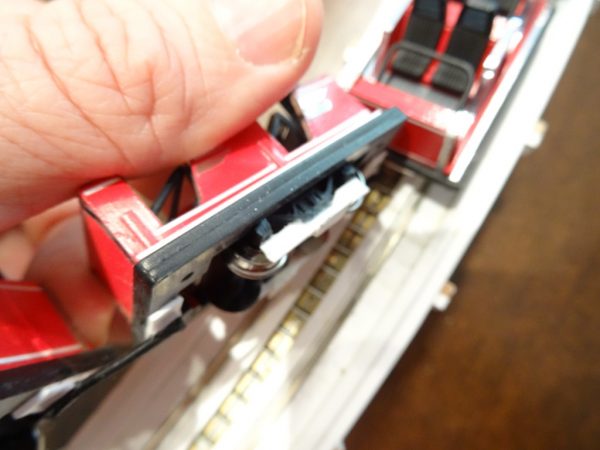
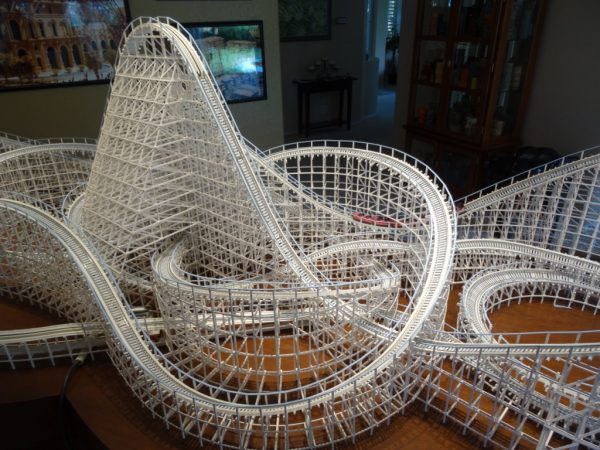
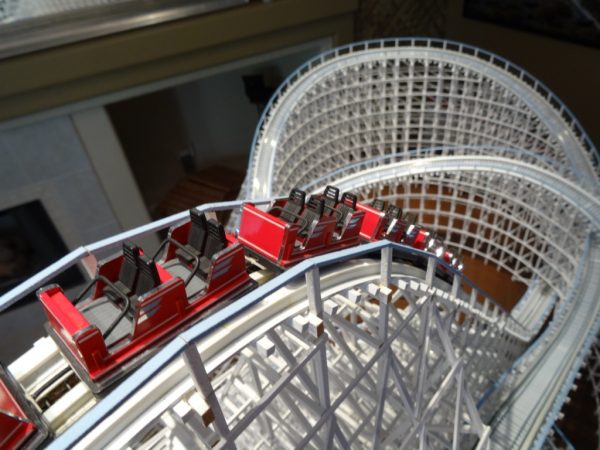
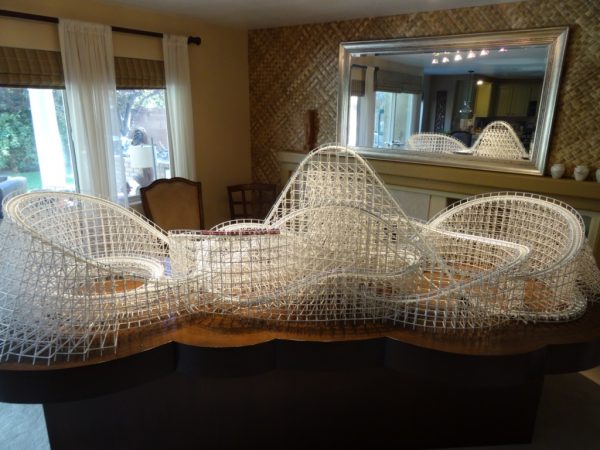
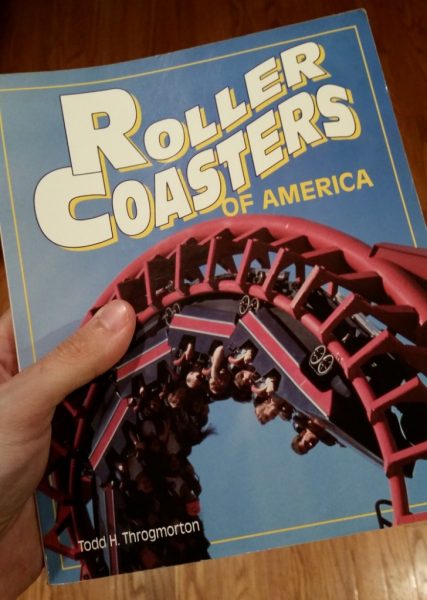
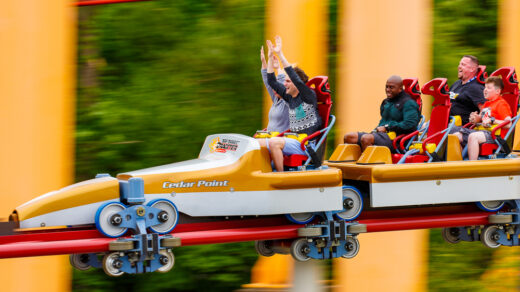
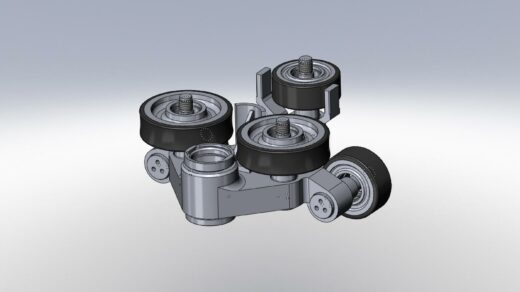
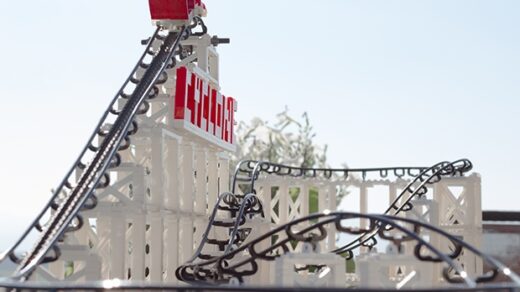






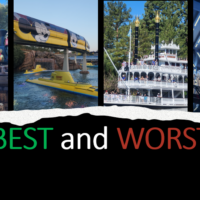




I love the looks, the feel and the detail of this roller coaster. I would love to build one for myself, being retired and in need of a quality project. How would I be able to get hold of files, or 3d files, I have a resin and a filament printer and about 30 more years to go..
Maybe try contacting Adam? Matt at Print My Ride Detroit also has some files and tutorials for 3D printing coasters.